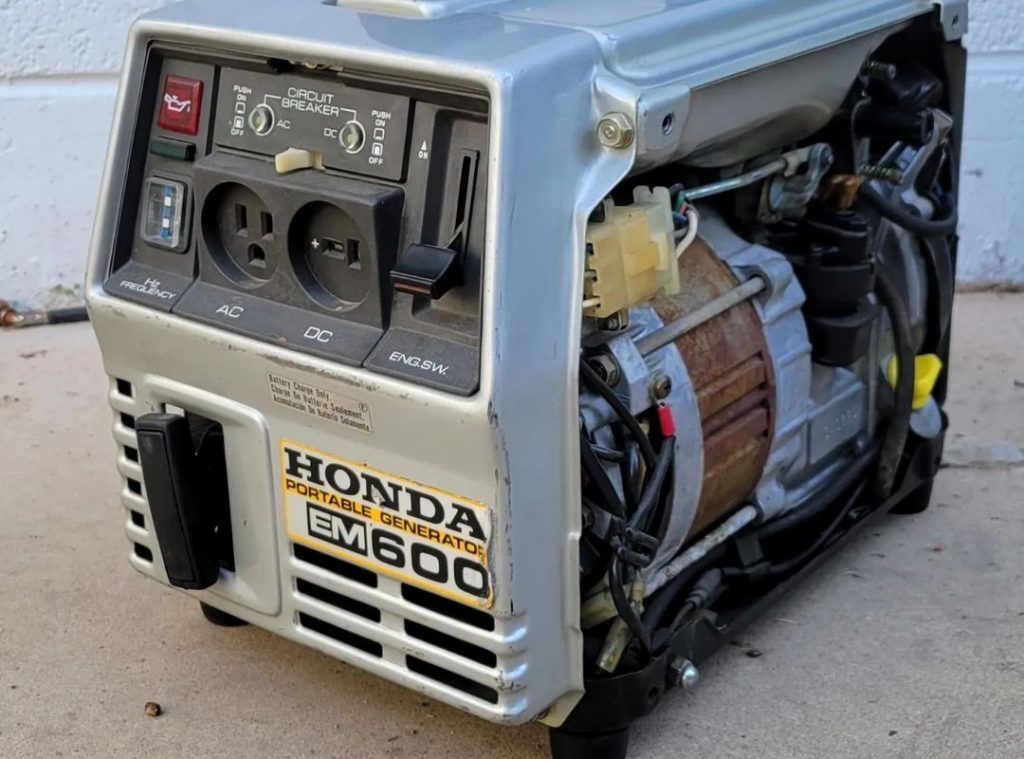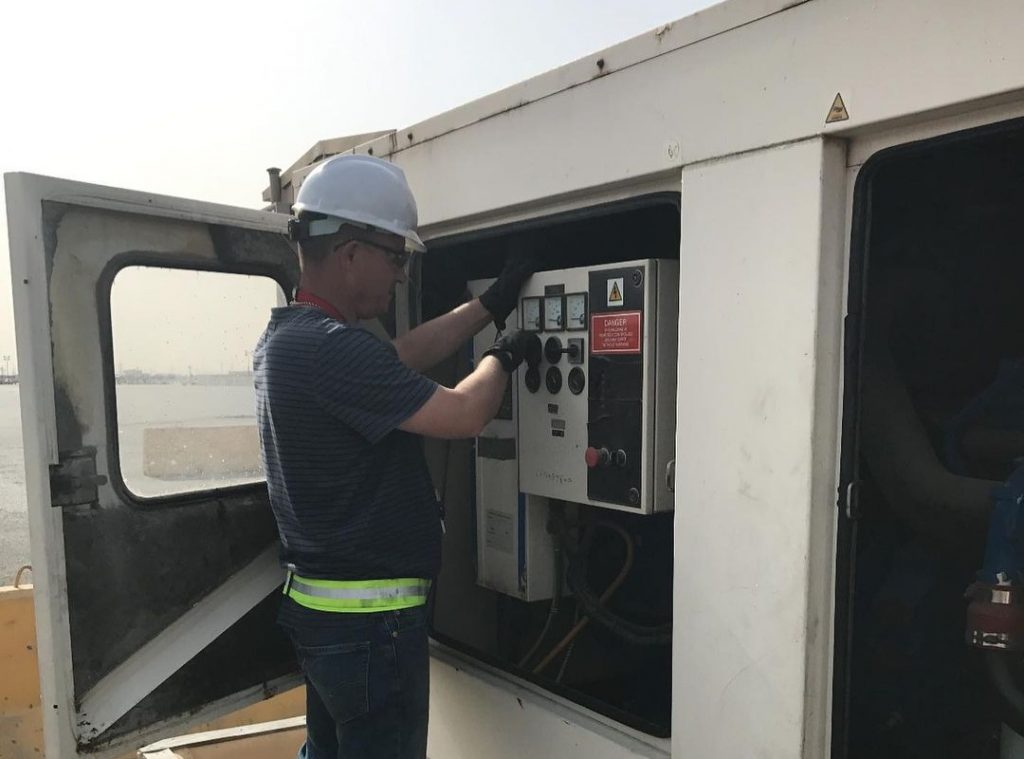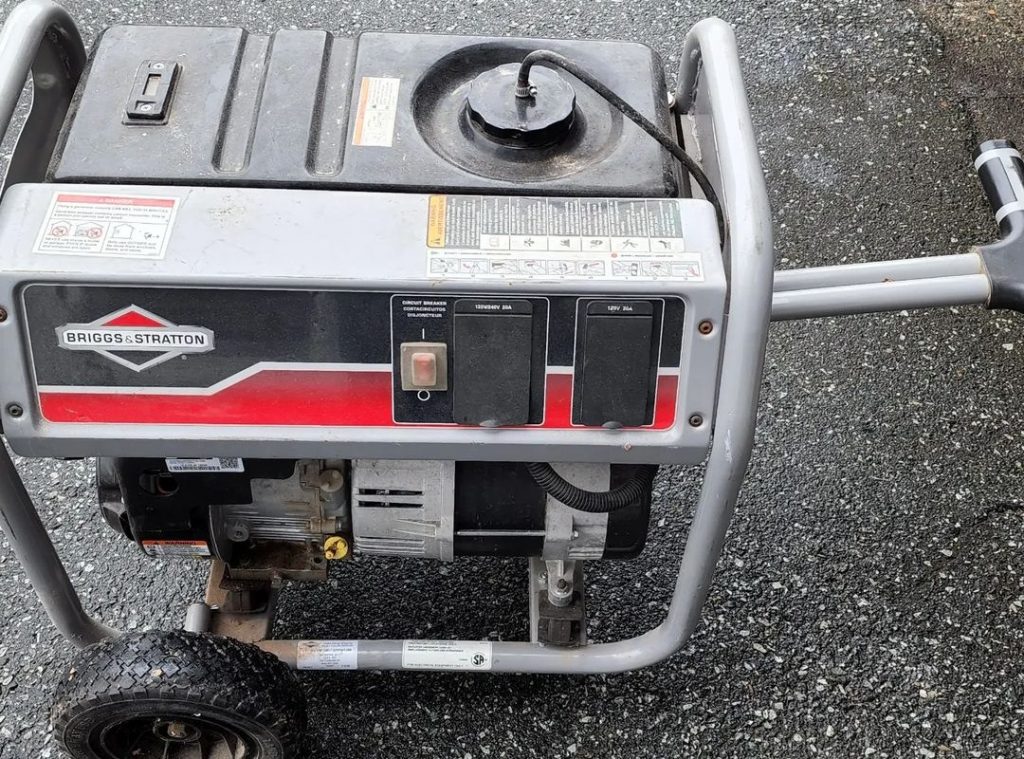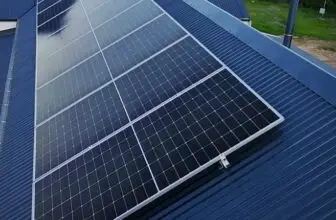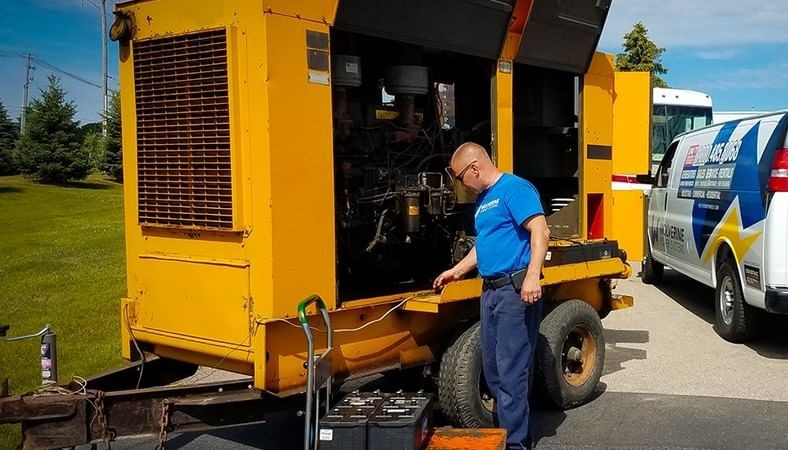
A long and trouble-free operation depends on the correct running-in of the gasoline generator. To avoid generator break-ins certain rules must be followed. The main breakdowns of generators, just and connected with the wrong running-in of the engine, should be carried out in any case, after the purchase of the generator.
Therefore, when you buy your alternator, you should ask the sales assistant if a running-in period is necessary. Sometimes, if the engine of an alternator has already been run on a test bench, there is no need to do this at home. In general, alternators need to be run in, and you can find out how to do this correctly in this article.
Generator Overview
Contents
What is a generator? It is an electromechanical device that converts kinetic energy into an electric alternating current. The basis of the energy conversion is a rotating magnetic field. The concept of a generator includes a host of devices with different operating principles. These include galvanic, electrostatic devices, solar cells, power plant turbines, etc.
What is Break-in For a Generator?
The running-in of the alternator, as well as other equipment with a gasoline internal combustion engine, is necessary for the “lapping” of parts. In the process of running in the engine, all the roughnesses are removed, so the oil change and the process of running in itself should be treated more than responsibly.
It is important to understand that the running-in of an alternator engine is a sparing mode of operation, as close as possible to the normal mode, but not 100%. Let’s consider below exactly how the running-in of a gasoline generator occurs, and what you need to know to do this.
Precautions
Even if you have been dealing with stand-alone generators for a long time, do not neglect safety rules. A fire on a unit with a full tank will inevitably lead to a large fire. To protect yourself, others, and your property, follow these simple guidelines.
- Always run the unit only at idle, with no load. To avoid accidentally starting it with devices connected, always disconnect and remove all powered equipment when you are finished using it.
- If a remote start function is available, use it only after inspecting the machine itself, checking the oil and fuel levels, and disconnecting previously energized appliances.
- Each generator has an engine power rating. Do not take chances and engage in parallel connection of more devices than it can “pull”. Such savings can lead to unplanned expenses for the purchase of a new generator to replace the failed one.
- If your machine has an air-cooling system, provide it with an inflow of fresh air during operation so that it does not overheat. This advice is especially relevant in the heat of summer.
- Too frequent switching on and off is detrimental to the unit. If you know that you will need electricity again in 10 minutes, you should not turn off the engine.
Excessive downtime hurts the unit, so turn it on for a couple of hours every 3-4 weeks, even if you don’t need it yet.
How to Break in a Generator
Before you start your generator, first unpack the machine, check that all parts are present, and look for the operating instructions. Read this carefully before taking any further steps.
The generator should be installed on a level, dry surface. Note that some models are designed for outdoor use only. It can be dangerous to switch them on indoors. Make sure the unit is grounded.
Filling up the fuel
If you have a new Genset, fill it up with fuel (gasoline, gas, or diesel) you bought at a gas station. When filled with liquid fuel, the canister must be clean and dry inside, as dust, small debris, and water getting into the generator can accelerate wear and tear. For most gasoline models, such as Fubag, Honda, or Pramac, regular automobile gasoline REGULAR without additives and other additives will do.
If your generator has already been used and you do not know when it was last started, it is better to drain the rest of the fuel. The fact is that after 1-2 months gasoline loses its properties.
Attention! Never refill the fuel directly into a running generator.
Checking the oil
You need engine oil to keep your machine running safely. You need to choose a responsible oil conditioner for the generator. You need to fill the oil that is specified in the manual of the generator. Don’t skimp and buy cheap brands.
You will need very little oil, so take a good synthetic oil. Pour it into the appropriate hole to the correct level, which will help to assess the risks on the dipstick. Be sure to screw the plug back in, otherwise, the oil will splash during operation. Generator break-in oil must be carried out according to the regulations.
If your alternator is used, it probably has some oil in it. But it’s better to drain it out completely and add new oil since every 70 hours of operation of the unit requires a grease change, and this unit has probably definitely already worked its 70 hours.
Manual start features
Most inexpensive generators of small and medium power are equipped with a manual start. Perhaps everyone knows how to start an electric generator of this type: you need to pull hard for a special handle on a rope. The higher the power of the device, the more intensively you have to pull the cable.
Manual start on a gasoline or diesel generator
- Check that the air damper is closed.
- Pull the starter handle toward you with moderate force.
- When you feel resistance, pull harder in one sharp motion.
- Gradually and smoothly release the handle. Do not drop it!
If you don’t manage to start the motor right away, do it again.
If all went well, let the running engine warm up a little, and then open the air damper.
Manual start on an inverter generator
- Turn on the power to the appliance.
- Turn the knob to the “On” position and open the air access damper.
- Pull the cable handle and start the unit.
Starting the alternator with an electric starter
An electric starter is more convenient for starting the engine because no force is needed. To turn on such units, all you have to do is turn the key or press a button. There are also devices with the ability to remotely start from the remote control. Here’s the correct sequence of steps for turning on an electric starter generator.
If your Genset requires a battery, check to see if it’s included and if it’s not, get one separately. Make sure that the terminals on the battery are securely fastened and have the correct polarity. Start the unit by turning the key or pressing the button.
Recommendations
Do not buy a hand-held generator without a manual. Even if you have used a similar appliance before, each model is different, so make sure the box contains the instruction manual, appliance diagram, and other important documentation when buying.
Don’t mix different brands of oil: this will degrade the properties of the lubricant and shorten the life of your unit.
Frequently Asked Questions
Answers to questions about how to break in a generator
How long does it take to break in a new generator?
It can take anywhere from a few hours to a few days to break in a new generator. The exact time should be specified in the operating instructions that come with the generator.
Can you leave the oil in a generator?
Generally, no. It is recommended that you change the oil in a generator every 50 hours of use or once a year, whichever comes first.
Does a generator use more gas with more things plugged in?
A generator uses more gas with more things plugged in. But the flow rate will not be more than stated in the passport.
Conclusion
In this article, we have reviewed the generator break-in procedure. If you need to break in a new generator, or re-break in an old one, here are a few tips to follow. First, run the generator for about two hours without any load on it. This will help the engine to seat the rings and loosen any parts that may have become fused during shipping.
Following these steps will help to ensure that your new generator will last for years to come.

